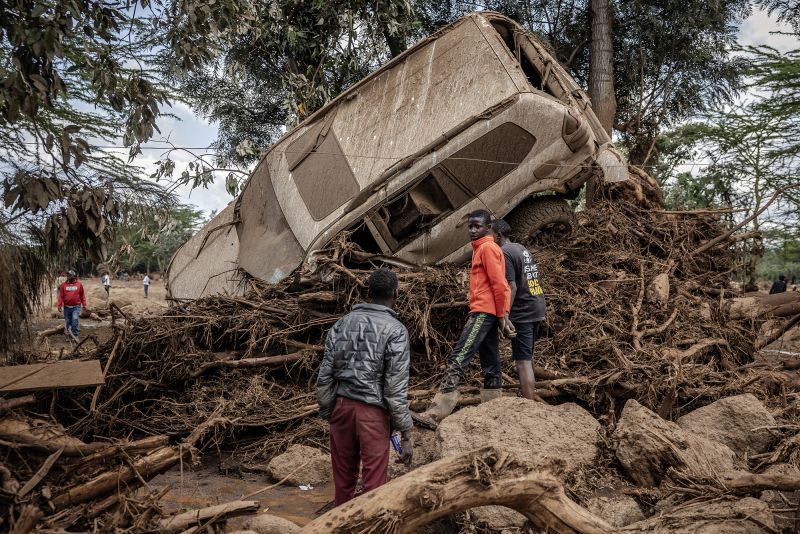Staff and visitors have been left stranded and buildings submerged at Kenya’s famous Maasai Mara nature reserve, as the death toll in catastrophic flooding in the country’s southwest rose to at least 188 people.
Local authorities ordered some tourist facilities in the National Reserve to close after River Talek, one of the tributaries of the Mara River, burst its banks and swept through more than a dozen riverside tourist lodges and camps.
Videos on social media showed some buildings and vehicles fully submerged inside the popular park as tourists scrambled to leave affected areas.
Weeks of heavy rain and flash flooding has ravaged parts of Kenya for days, leaving dozens of people missing around the capital, Nairobi, and causing a devastating mudslide in the town of Mai Mahiu.
In Maasai Mara, camp owners were told to leave the affected properties and “move to higher ground further away from River Talek,” governor of Narok county Patrick Ole Ntutu said on Wednesday.
But local administrators went even further in their warnings, threatening legal consequences for people still left behind, even accusing those who stay of attempting suicide.
“We will forcefully evacuate anybody left in any homes or lodges along the river. We will take action against them because that is considered attempted suicide,” Narok county commissioner Kipkech Lotiatia told reporters.
Authorities said they had deployed two helicopters to rescue stranded tourists and local staff around the national reserve after receiving distress calls. The flooding was caused by swollen rivers after several days of continuous rainfall, the county said on X.
“We were being rained on from around 2 a.m. to 5.30 a.m. but we couldn’t get out and the planes coming to rescue us couldn’t get in one time.”
The Kenya Red Cross said it had rescued more than 90 people and at least 14 camps around River Talek had been closed.
While parts of the Mara have flooded before in Kenya’s so-called long rains season, locals say the scale of this year’s deluge has been unprecedented.
The country has deployed “corps from the Paramilitary Academy” of its National Youth Service to Narok to “join the multi-agency team for search and rescue operations following the heavy downpour,” a statement on X said.
The Horn of Africa, a region of East Africa that includes Kenya, is one of the most climate-vulnerable regions in the world. Heavy rains have also affected Tanzania and Burundi.
“Kenya is facing a worsening flood crisis due to the combined effects of El Niño and the ongoing March-May 2024 long rains,” International Federation of Red Cross and Red Crescent Societies (IFRC) CEO Jagan Chapagain said in a post on X earlier this week, referring to the climate pattern that originates in the Pacific Ocean along the equator and impacts weather all over the world.
“The unfolding devastation highlights the government’s obligation to prepare for and promptly respond to the foreseeable impacts of climate change and natural disasters,” said Nyagoah Tut Pur, Africa researcher at Human Rights Watch, said in a statement Thursday. “Kenyan authorities should urgently ensure support to affected communities and protect populations facing high risk.”




